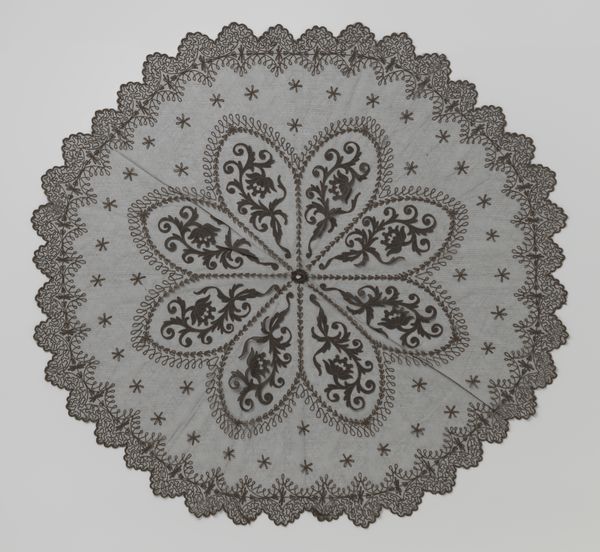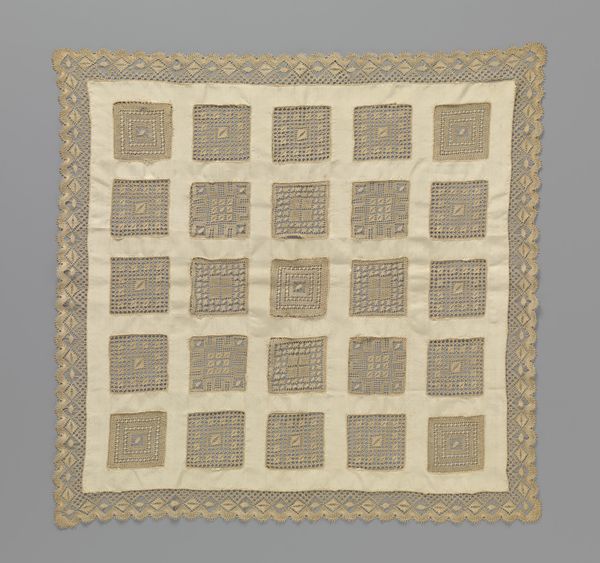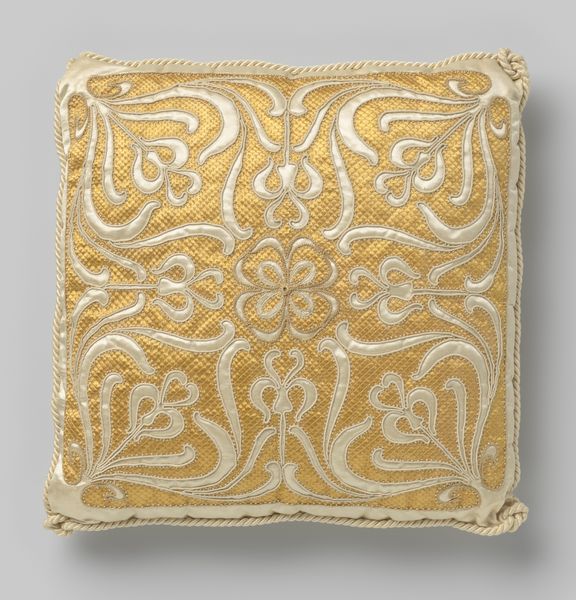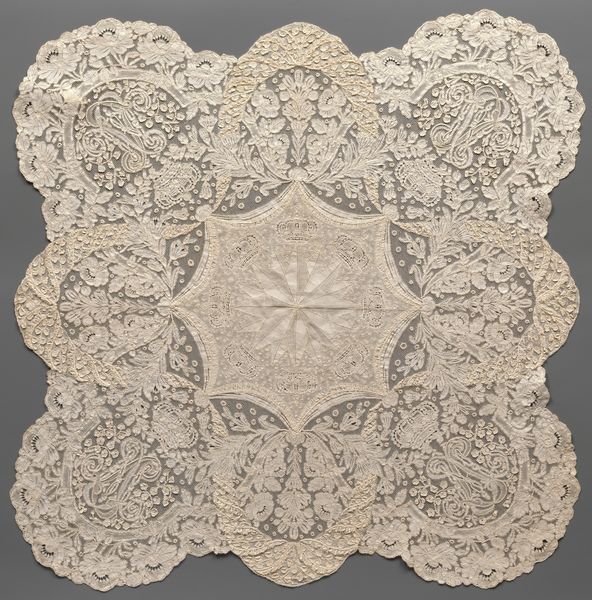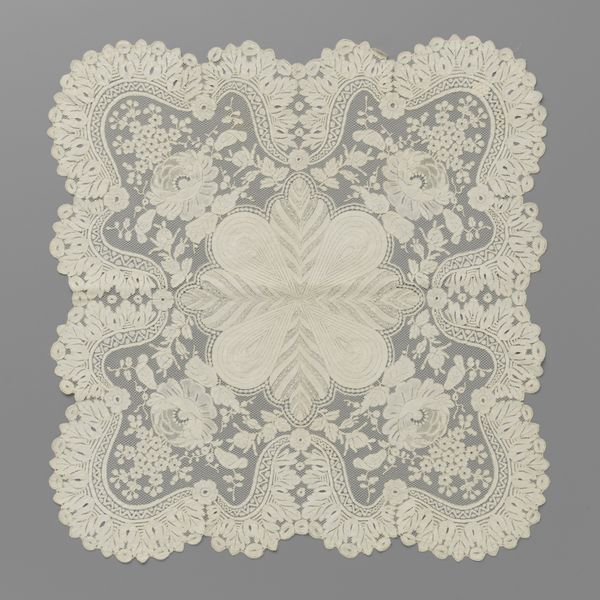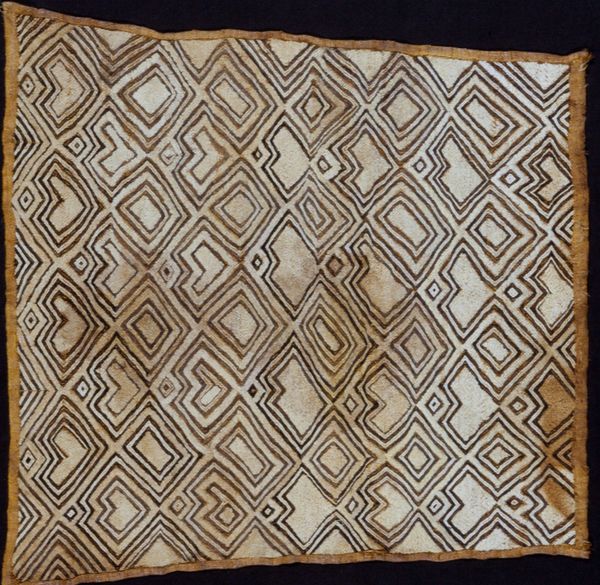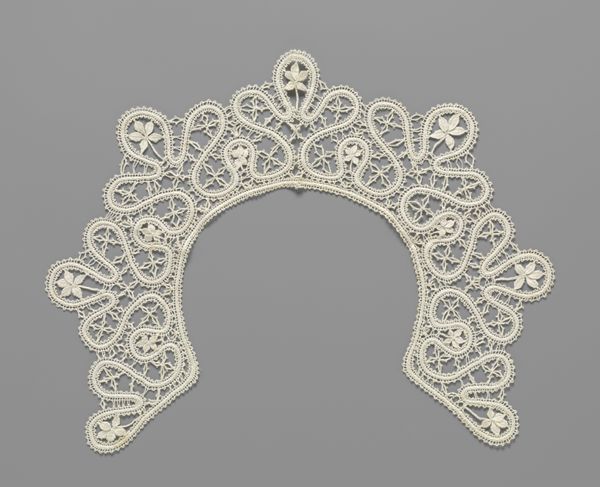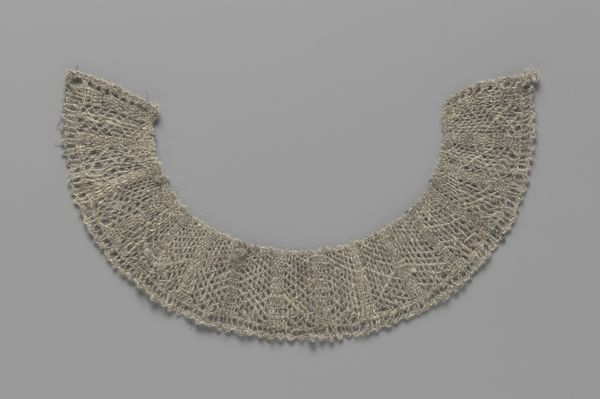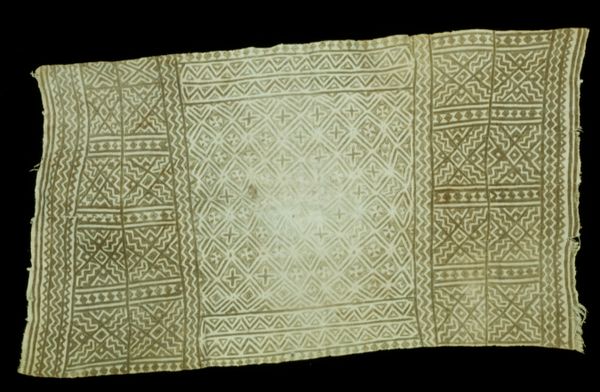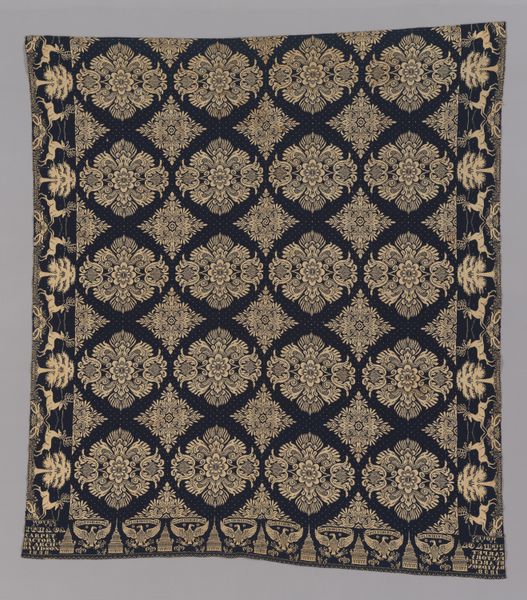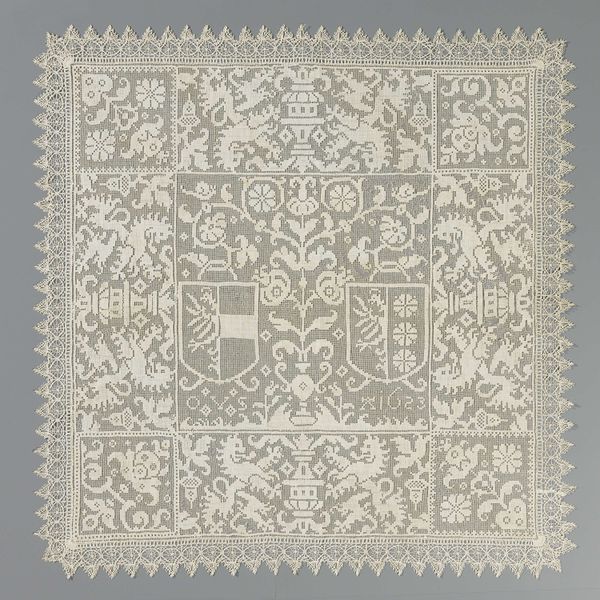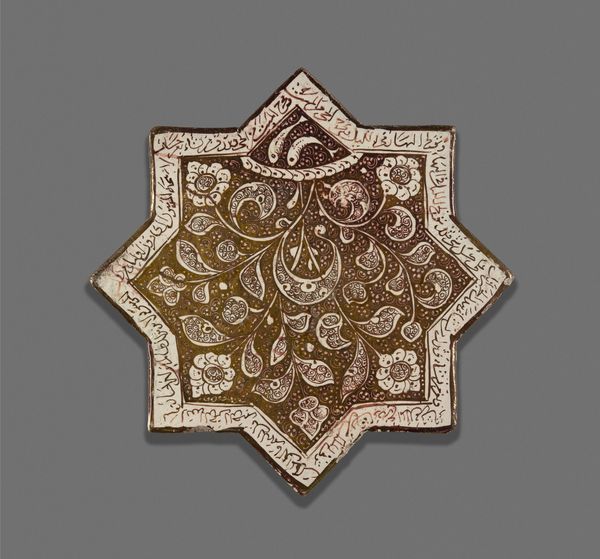
Kleed van kloskant met symmetrisch patroon gevormd door een lint c. 1914
0:00
0:00
textile
#
natural stone pattern
#
textile
#
hand-embroidered
#
pattern design
#
repetitive shape and pattern
#
geometric
#
fabric design
#
repetition of pattern
#
regular pattern
#
pattern repetition
#
decorative-art
#
layered pattern
#
combined pattern
Dimensions: length 17 cm, width 17 cm
Copyright: Rijks Museum: Open Domain
Curator: What an intricate pattern. I'd say that evokes delicacy. Editor: Indeed! What we have here is "Kleed van kloskant met symmetrisch patroon gevormd door een lint", or "Bobbin lace cloth with a symmetrical pattern formed by a ribbon," created around 1914 by Louise Wilhelmina van der Meulen-Nulle. It's a stunning example of textile art. Curator: The pattern is so regular, almost mathematically precise. And yet the edges look unfinished and hand-made. What material is it made from, and what kind of labor went into crafting this? Editor: It's made from weaving, textile is the technique that was used for this piece of work. Bobbin lace is incredibly labor-intensive, requiring meticulous handwork and specialized skills. The context of its creation is also important; around 1914, we were on the cusp of immense social and technological change. Handmade lace was starting to be replaced by machine-made alternatives. This could be an example of high craft tradition facing new industrialized economies. Curator: I see how the patterns act like framing devices, constantly drawing the eye back to the center. The shapes created feel incredibly stylized, the way they integrate the leaves and floral motifs reminds me of art nouveau but they feel distinctly different because of its symmetrical design. Editor: Precisely. Consider the function, too. A piece like this could be purely decorative. The social act of crafting such pieces provided employment but also affirmed cultural identity and taste. This bobbin lace provides insight into gendered labor roles during this period. Curator: Thinking about form, that ribbon motif dominates the structure of the composition. How the material is worked into radial symmetry also offers visual balance, almost like looking at a mandala. The artist played on contrasts. Editor: I appreciate you noticing the symbolic dimension; by observing the piece in a detailed manner, a sense of completion and purpose becomes prominent. What a captivating glimpse into the intersection of aesthetics, craft, and socio-economics of the time. Curator: Agreed. There’s a subtle beauty in its quiet precision.
Comments
No comments
Be the first to comment and join the conversation on the ultimate creative platform.
